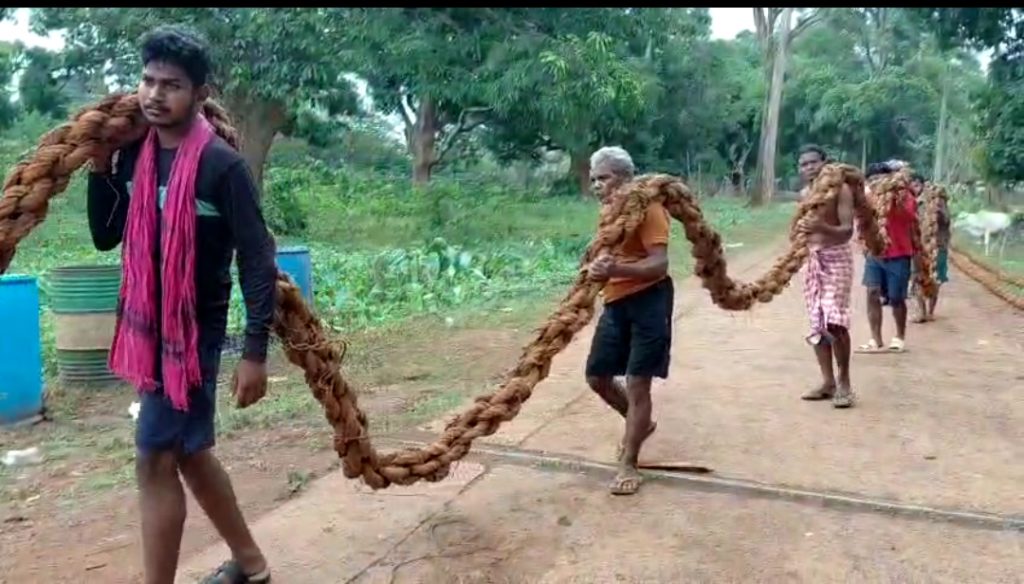A sleepy village under Banspal block in Keonjhar district hums with activity as soon as the Rath Yatra approaches, when the villagers get the opportunity to serve the deities by weaving the ropes for Nandighosha chariot using siali vines – a unique tradition associated with the annual festival at Lord Baladevjew temple. Sources said the use of ropes beautifully crafted from siali vines has been prevalent at the shrine for centuries. As per the tradition, members of Bhuyan tribal community move in groups and harvest the bark of siali vines from nearby forests and painstakingly weave these sacred ropes as an offering to the Lord. In past, six Bhuyan villages were supplying these ropes. Meanwhile, the residents of Danala village in Suakati panchayat under Banspal block have inherited this revered tradition.
Every year, when the car festival approaches, the residents gather to weave the ropes that are used to pull the Nandighosha, the only chariot for deities of Lord Baladevjew temple. The villagers start the preparations for weaving the ropes on the auspicious occasion of Akshaya Tritiya, which marks the commencement of chariot works. They trek into the hills of Gandhamardan with all austerity to collect the Siali bark. After collecting the bark, they wait to receive the Lord’s symbolic blessing on Snana Purnima to weave the ropes that will steer Nandighosha. For devotees, Siali ropes represent devotion and tradition, a vital part of pulling the chariot. Many believe the chariot cannot move without them. Devotees often tear off small pieces of the ropes during the festival and preserve them at home as sacred keepsakes.
According to Kunja Dehuri, the Bhuyan chief of Danla village, “We start collecting barks from fine siali vines in the hills starting from Akshaya Tritiya. On Snana Purnima, we obtain permission and craft the ropes.” “Although it’s a painstaking process, we continue the tradition with utmost faith and devotion,” said Santal Behera, a Danla resident. They cut vines from trees that are free of birds, ants, or insects. The harvested vines are brought back to the village mandap, where the bark is stripped, spun into thread, and twisted into strong ropes. Bhimasen Puhan, another resident of the village, said three ropes are prepared for the chariot, and an extra one is kept as backup. The thickness of each rope is about 15 to 18 inch while its length is 145 to 150 ft. “Use of ropes spun from siali vines to pull the chariots is an ancient tradition,” said Raj Kishore Panda, the temple’s head priest. The festival is also famous for its towering 72-ft high Nandighosha chariot, regarded as the tallest in the world. The chariot carries the deities Lord Baladevjew, Devi Subhadra and Lord Jagannath to the Mausi Maa temple, pulled by thousands of devotees.
